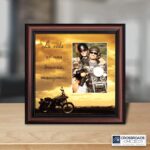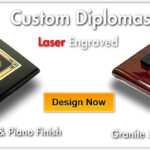I. Understanding Vintage Audio Equipment: A Collector’s Perspective
II. Essential Upcycling Techniques for Restoring Vintage Audio Gear
III. Tools and Resources for Successful Audio Restoration Projects
Understanding Vintage Audio Equipment: A Collector’s Perspective
Ah, vintage audio equipment! It’s like stepping into a time machine that transports you back to a golden age of music. Whether you’re a seasoned audiophile or just someone who appreciates the warm sounds of vinyl, collecting vintage audio gear can be a thrilling adventure. But what really sets this hobby apart? Let’s dive into the nuances of understanding vintage audio equipment from a collector’s perspective!
Why Collect Vintage Audio?
Collecting vintage audio equipment is not just about owning old gear; it’s about the stories, the craftsmanship, and the nostalgia they bring. Here are a few reasons why many people find joy in this hobby:
- Unique Sound Quality: Vintage gear often has a character and warmth that modern equipment struggles to replicate. Many collectors swear by the rich sound of tube amplifiers or the crackly charm of vinyl records.
- Craftsmanship: There’s an undeniable artistry in vintage audio equipment. The materials, design, and engineering reflect a time when quality was paramount.
- Nostalgia: For many, vintage audio gear is a connection to the past, invoking memories of their youth or simpler times.
What to Look For When Collecting
As you embark on your collecting journey, it’s wise to know what to look for. Here are some key factors to consider:
- Brand and Model: Certain brands like Technics, Marantz, and JBL have a legendary status among collectors. Researching popular models can help you identify potential gems.
- Condition: Assess the physical and functional condition of the equipment. Is it working? Are there scratches or dents? The condition can significantly influence its value.
- Originality: Look for equipment that is as close to its original state as possible. Modifications can decrease value, especially if they alter the sound or appearance.
Building Your Collection
Now that you know what to look for, how do you start building your collection? Here are some tips to help you along the way:
- Research: Join online forums, read books, and follow collector blogs to learn more about vintage audio equipment. Knowledge is power!
- Attend Auctions and Swap Meets: Events like these are treasure troves for collectors. You never know what you might find!
- Network: Connect with other collectors. They can offer invaluable advice and might even be willing to trade or sell pieces from their own collections.
Final Thoughts
Collecting vintage audio equipment is more than just a hobby; it’s a passion that allows you to connect with music in a unique way. By understanding the nuances of vintage gear, you can cultivate a collection that not only sounds great but also tells a story. So gather your records, fire up that vintage turntable, and enjoy the rich tapestry of sound that only vintage audio equipment can provide!
Essential Upcycling Techniques for Restoring Vintage Audio Gear
Restoring vintage audio gear can be an incredibly rewarding journey, especially when you breathe new life into machines that have stood the test of time. Whether you’ve just unearthed a dusty turntable at a flea market or inherited a beloved receiver, upcycling techniques can help you bring these treasures back to their former glory. Let’s dive into some essential techniques that every audio restoration enthusiast should know!
1. Cleaning: The First Step to Revival
Before diving into any mechanical repairs, it’s crucial to give your vintage audio equipment a good cleaning. Dust and grime can accumulate over decades, hiding the beauty and functionality beneath. Here’s how to get started:
- Use Compressed Air: This is perfect for blowing dust out of tight spaces, like knobs and speaker grills. Just be gentle!
- Soft Cloths and Brushes: For surfaces, use a microfiber cloth, and for intricate areas, a soft brush can work wonders without scratching the finish.
- Isopropyl Alcohol: A diluted solution can help remove sticky residues from buttons and knobs. Just make sure it’s safe for the materials!
2. Replacing Components: Know When to Call for Backup
Sometimes, cleaning isn’t enough, and you might need to replace worn-out components to ensure optimal performance. Here are a few common parts you may need to replace:
- Capacitors: These can age and wear out, leading to audio issues. Swapping them out can significantly enhance sound quality.
- Speaker Drivers: If your speakers have lost their punch, replacing the drivers can bring back that rich, full sound.
- Belts and Cables: Turntables and cassette decks often have rubber belts that wear down over time. Replacing these can restore functionality.
If you’re unsure about which components to replace or how to do it, don’t hesitate to seek help from online forums or local repair shops. The vintage audio community is a treasure trove of knowledge!
3. Upcycling Enclosures: Aesthetic Matters
Sometimes, the outer appearance of your vintage gear can use a facelift. Upcycling the enclosure can not only protect the components but also add an appealing style. Here are a few creative ideas:
- Refinishing Wood: If your audio equipment has a wooden finish, consider sanding it down and applying a fresh coat of varnish or stain. This can make a huge difference!
- Custom Paint Jobs: For metal enclosures, a fresh paint job can breathe new life into your gear. Just make sure to use paint that’s safe for electronics.
- Artistic Modifications: Don’t shy away from adding personal touches! Stickers, graphics, or even LED lights can give your gear a unique flair.
4. Testing and Calibration: Fine-Tuning Your Restoration
Once you’ve cleaned, replaced components, and spruced up the enclosure, it’s time to test and calibrate your vintage audio gear. This step is crucial to ensure everything is functioning correctly:
- Use a Multimeter: This tool can help you check for voltage levels and confirm that components are operating within specifications.
- Sound Tests: Play various audio tracks to assess sound quality and make adjustments as necessary. Don’t forget to adjust the equalizer settings!
- Listen for Anomalies: Pay attention to any crackling or distortion, which might indicate further issues that need addressing.
Remember, restoring vintage audio gear is as much about the journey as it is about the final product. Embrace the process, learn as you go, and enjoy the rich sounds that come from your hard work!
Tools and Resources for Successful Audio Restoration Projects
Restoring vintage audio equipment can be an exciting journey, but it can also feel a bit daunting at times. Having the right tools and resources at your fingertips can make all the difference in navigating this rewarding hobby. In this section, let’s take a closer look at some essential tools, as well as where to find valuable resources to help you on your restoration adventures.
Essential Tools for Your Restoration Toolkit
Before diving into your restoration project, it’s important to gather the necessary tools. Here’s a list of must-haves for any vintage audio enthusiast:
- Multimeter: This handy device helps you measure voltage, current, and resistance, which is crucial for diagnosing electrical issues.
- Screwdrivers: A variety of screwdrivers, especially precision ones, will be invaluable for opening up your gear and making adjustments.
- Soldering Iron: A reliable soldering iron is essential for any minor repairs or component replacements. Make sure to get a good quality one!
- Wire Strippers: These are great for cutting and stripping wires when you’re working on new connections.
- Cleaning Supplies: Don’t forget the basics! Isopropyl alcohol, lint-free cloths, and contact cleaner will help you keep everything spick and span.
Extra Tools for Advanced Projects
If you’re feeling adventurous and want to take your restoration skills up a notch, consider adding these advanced tools:
- Oscilloscope: This tool will allow you to visualize audio signals and troubleshoot issues with greater precision.
- Capacitance Meter: Knowing the health of your capacitors is essential; this device will help you test their values easily.
- Heat Gun: Perfect for reworking plastics or removing stubborn labels, a heat gun can be a great asset in restoration projects.
Where to Find Resources and Support
Now that you’ve got your tools in order, it’s time to look for resources. Luckily, the vintage audio community is vibrant and supportive! Here are some great places to seek knowledge and connection:
- Online Forums: Websites like Audio Asylum and AudioKarma have dedicated sections for vintage audio restoration. You’ll find advice from fellow enthusiasts, tips on specific equipment, and even troubleshooting help.
- YouTube: There are countless tutorials on YouTube covering various restoration processes. Channels like Kevin Smithson and Mike Kramer are great for visual learners.
- Books and Manuals: Don’t underestimate the power of a good book! Titles focused on electronics repair and vintage audio equipment can provide in-depth knowledge and guidance.
- Local Workshops: Check your local community centers or tech schools for workshops on electronics repair – it’s a great way to gain hands-on experience.
Armed with the right tools and resources, you’ll be well-equipped to dive into your vintage audio restoration projects. Remember, every piece of gear has its own character, and with a little patience and passion, you can breathe new life into them!










Comments